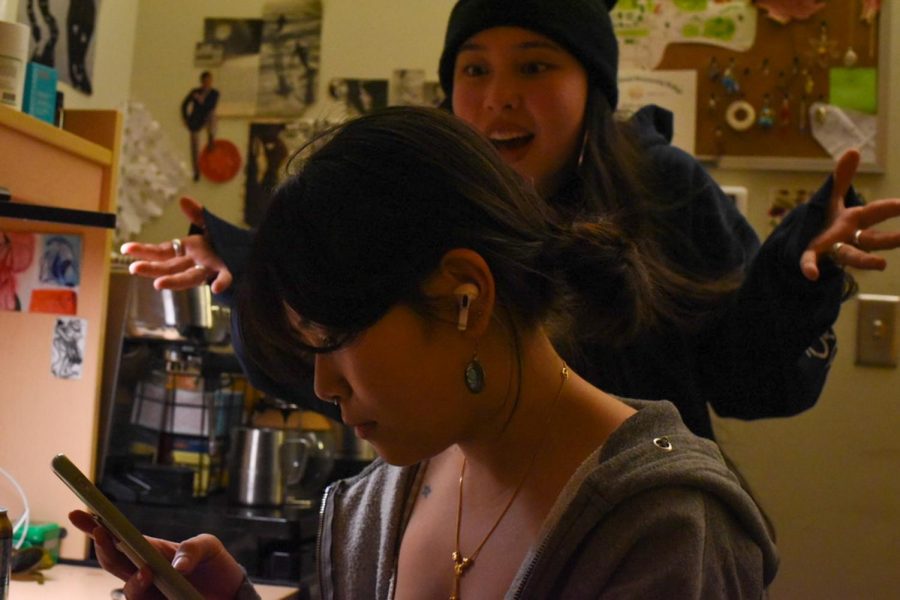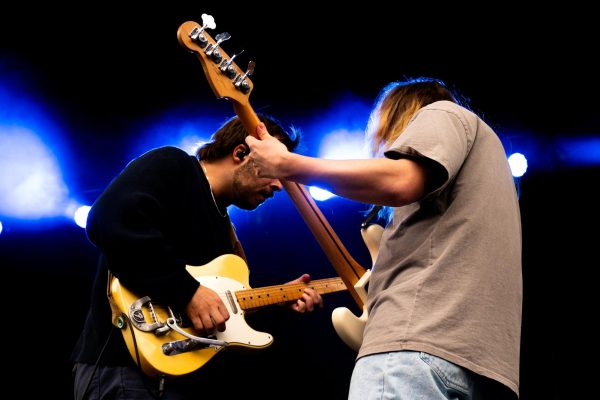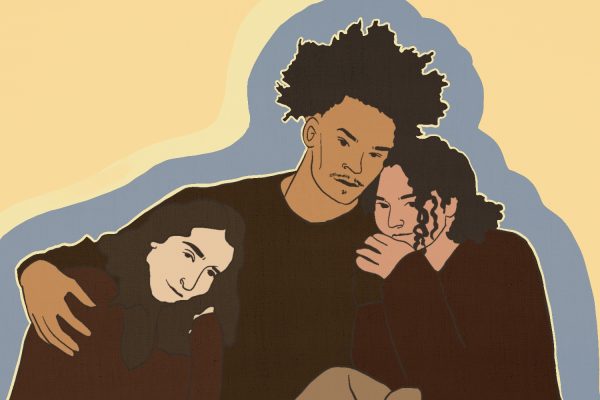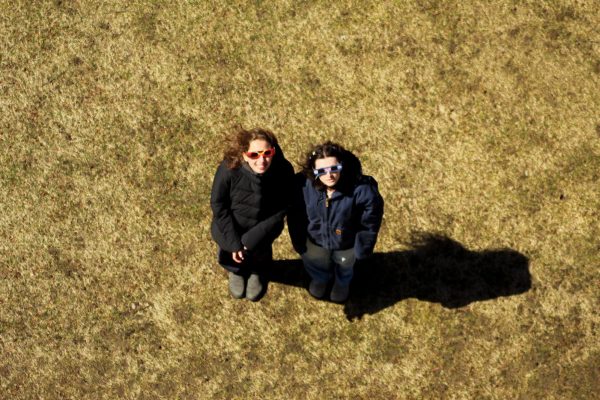Plugging in or tapping out? The implications of headphones
Photo Illustration: Some students believe headphones are a sign of disinterest and in turn show respect by taking out at least one AirPod when conversing with others.
Two pieces of plastic jammed into our ears act as a teleportation device for our minds.
Headphones and earbuds can make a five-minute walk to class feel like a heroic odyssey. Even after bombing an exam, they envelop us in melodious bliss reminiscent of a simpler time.
They make us appear inattentive in dining halls so that we can secretly listen in on other people’s conversations and avoid having our own.
By fusing public space with private experience, headphones are reshaping students’ social dynamics and approach to music appreciation.
Headphones’ effect on social relationships
Susan Fenstermacher, a senior lecturer in psychological science, has noticed an increase in the use of headphones and AirPods since the onset of the COVID-19 pandemic, after students grew accustomed to using them to focus in remote classes.
“We’ve all become a little bit more proficient with different types of technology and maybe feel like we need to access them more,” she said.
We can focus our full attention on only one thing at a time, Fenstermacher said. When listening to music or a podcast in public, our narrowed focus makes us less likely to notice our surroundings, including people looking to engage with us.
“That has the potential to affect students’ motivation to start new friendships,” she said. “Having the conversations that could lead to deeper relationships isn’t happening.”
However, neurodivergent people may wear noise-canceling headphones to counteract sensory overload—when the brain takes in more sensory input than it can process—in bustling public spaces, according to a Feb. 15, 2022 PsychCentral article.
We tend to have less-meaningful conversations while wearing headphones because we have to constantly shift our focus between what’s being said to us and what’s playing in our ears, Fenstermacher said.
The presence of headphones may make another person think we are disinterested in what they have to say or deter a social approach altogether, Fenstermacher said.
“There’s that image that you’re conveying to potential interaction partners—that is ‘leave me alone,’” she said.
Listening to music in public might otherwise act as a conversation starter in asking someone’s favorite songs, artists, albums or podcasts, Fenstermacher said.
“That would depend on the level of extraversion of the person,” she said. “Are we going to feel brave enough to interrupt somebody’s activity to ask them?”
First-year Ally Long has been wearing AirPods more recently since coming to college due to having longer walks to her classes and living with a roommate, she said.
“If I see someone talking to me and they have headphones, I’m fine with it,” she said. “But if I do it, I feel like people don’t think I’m paying attention. If someone has a conversation with me I pop out at least one AirPod.”
Long listens to music all day, only taking them out during class to appear more attentive, she said.
“It calms me down and gives me something to think about other than my thoughts,” Long said.
Headphones’ effects on musical experience
Clyde Stats, a lecturer in music history, identified music as a cultural reflection of both the musician and intended audience.
“An artist doesn’t create in a vacuum,” he said. “[They’re] affected by what is going on around them and they process it according to their specific cultural filters. What comes out is a reflection of that artist’s connection to their culture.”
Culture is communicated by nuances in music, like instrumental details and vocal effects, which add layers to a song to produce a new musical experience with each listen, Stats said.
But Stats has noticed a decrease in students’ understanding of cultural connections to music, he said.
“To most students I come in contact with, music is just sounds,” he said.
This is because in making music more accessible, headphones increase efforts to multitask, Stats said. This makes it less likely that listeners will pick up on musical nuances.
“You can’t do that kind of listening when you’re walking across campus thinking about your next class,” he said. “The listening experience is more in the background of your mind.”
Headphones also converted music appreciation—which developed as a social experience—to a solitary activity, Stats said.
“It’s all about you, and the aspect of community is lost,” he said.
Music streaming services used with headphones provide access to a broad array of genres, creating diversified tastes but making it less likely the listener will form a deep appreciation for one genre, Stats said.
But Long finds value in variety, each genre having a distinct influence on her mood, she said.
“If I’m working on an essay that’s due in a couple of hours, I’m gonna put on disco so I’m ready to go,” Long said. “I love Metallica as I’m walking to class because I can really zoom. It feels like I’m in a war or something.”












